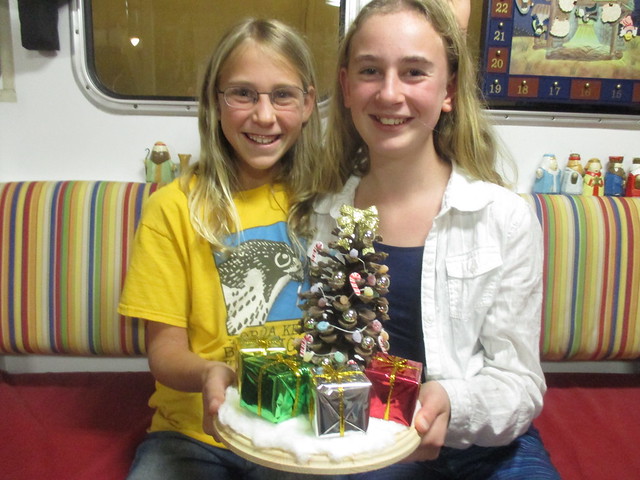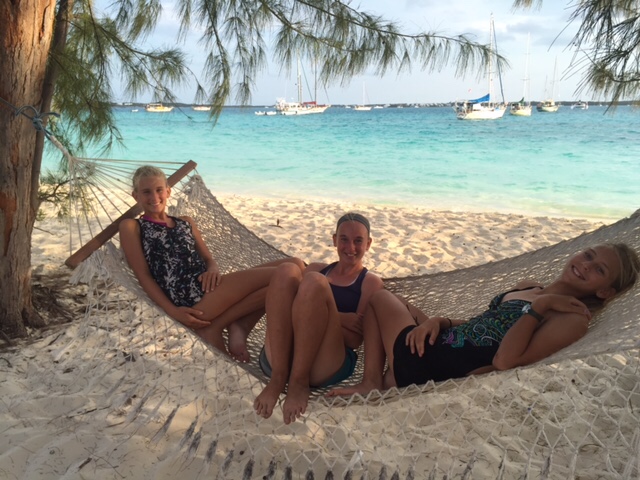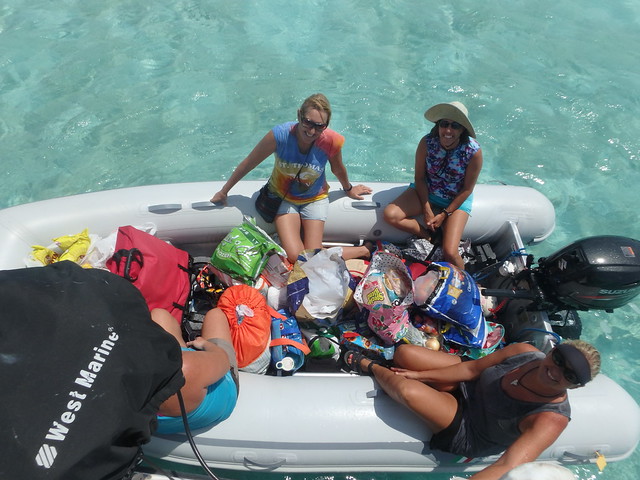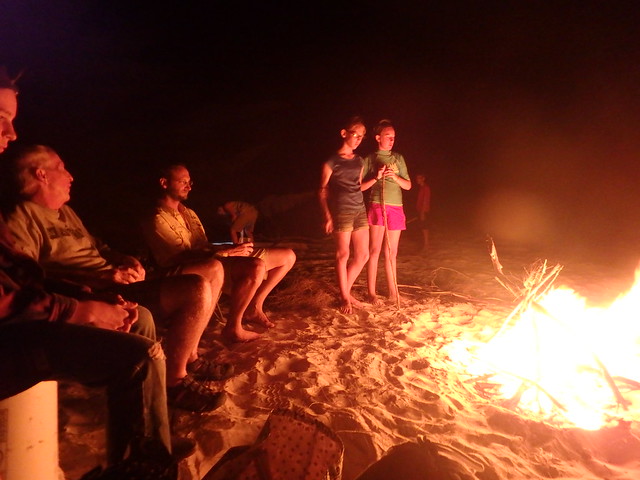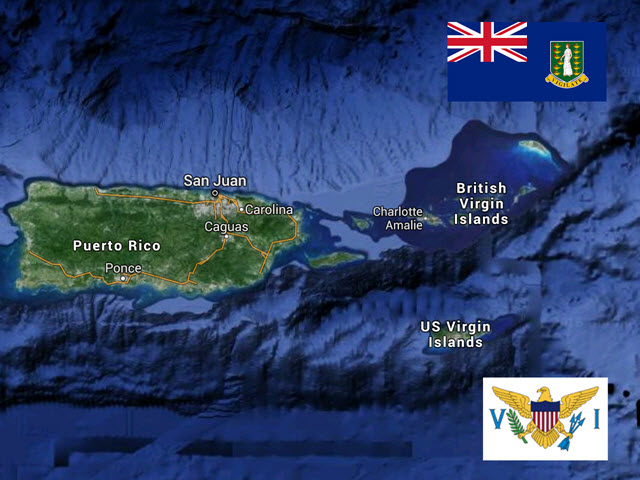
Basic Facts
Islands belonging to the US: St. John, St. Thomas, St. Croix
Islands belonging to the UK: Tortola, The Channel Islands, Virgin Gorda, Anegada, Jost Van Dyke
People/Customs: The islands are populated with the descendants of freed slaves. They are a tourist destination, especially for people chartering sailboats. All vehicles are driven on the left side of the road in the BVI.
Language: English
Climate: Rainy season (and hurricanes) from June to November, Dry Season December to May. Trade winds (prevailing from the East) all year, but heavier in the fall and winter and calmer in the spring and early summer.
Food/Farming: Sugar cane, tobacco, chickens, and tropical fruit like passion fruit, sugar apples, star fruit, mangoes, guava, papaya, soursop, yenip, sea grapes, tamarind, and goose berries.
Government: USVI are Non-Self-Governing territories purchased from the Kingdom of Denmark, BVI are Overseas British Territories, though not part of the European Union.
Currency: U.S. dollars accepted everywhere
Art/Music/Culture: Popular music and dance in the Virgin Islands are heritage dances, calypso, reggae, salsa, soca, and hip-hop; culture has influences from the French, Dutch, African, American, Danish, and Indian people.
History
The first inhabitants of the Virgin Islands were the native Ciboney, Arawak, and Carib tribes. The Carib people were cannibalistic, and were avoided and feared by the other tribes. Some words adapted from the Native American languages were canoe, tobacco, barbecue, potato, hurricane, and cannibal. Christopher Columbus discovered these islands in 1493 on his second voyage to the new world. He claimed the islands for Portugal, and seeing how many there were, named them for the martyred St. Ursula and the 11,000 virgins. From Columbus’ vantage point on the water, one island may have looked like a fat woman, earning it the name Virgin Gorda.
As more people came to the Virgin Islands, theft, smuggling, and piracy evolved. All were after a piece of Spain’s wealth, mostly gold taken from South and Central America. Sir Walter Raleigh raided Spanish settlements, and the channel south of Tortola is named for his cousin, the famous explorer/privateer Sir Francis Drake. Infamous pirates who roamed the waters of the Virgin Islands include Henry Morgan, Calico Jack and Anne Bonny, Bartholomew Roberts, and Edward Teach (Blackbeard).
As population increased, the Carib natives became more of a problem for the obvious reasons of their love for fighting and cannibalism. There was contention up until the 19th century, when there was a small war between the Caribs and the British. The natives, unable to form a sustainable slave labor force, were replaced with slaves imported from Africa, who harvested sugar cane for export and rum production. To this day, the inhabitants of the islands are primarily the descendants of freed slaves.
European nations were not the only ones interested in the Virgin Islands, however. Wanting them for military outposts to keep an eye on the passages to the Panama Canal and North America, The United States bought St. John, St. Thomas, and St. Croix from Denmark for $25,000,000 in 1917. The teetering island economy began to get stronger in the beginning of the 20th century with the tourist influx brought by the good weather and beautiful water. With the help of the charter-boat industry, marinas, and resorts, the Virgin Islands are now a major vacation hot-spot.
Land Forms/Flora and Fauna
The highest point is Crown Mountain, at 1,552 feet in St. Thomas; the lowest island is Anegada to the north. There is some tropical rain forest scattered throughout the islands. Many kinds of tropical fruit grow on the trees. The islands are home to many species of sea birds, tropical fish, coral, sharks, crustaceans, and turtles.
Things to do
Tortola has the Trellis Bay full-moon party, Mount Healthy hike, Bluewater Divers for diving reefs and wrecks, and Cane Garden Bay for beach and restaurants. In the Channel Islands, Salt Island has salt ponds and the Wreck of the Rhone, Norman Island has caves, Peter Island has beaches and snorkeling. Virgin Gorda has the Baths (unusual rock formations) and a sheltered bay to the north. Jost Van Dyke has The Bubbly Pool and Sandy Spit. St. John has the Coral Reef National Monument and the Annaberg Sugar Plantation. Charlotte Amalie in St. Thomas has shopping and Fort Christian.
Bibliography
Scott, Nancy and Simon. The Cruising Guide to the Virgin Islands, 17th Ed. 2014: Cruising Guide Publications, Dunedin, FL.

